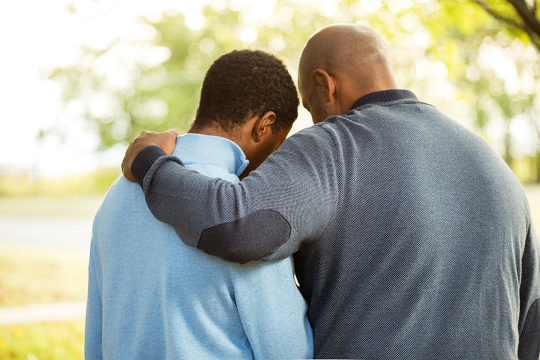Bullying continues to be a serious issue in schools. In fact, 1 in 5 kids report experiencing bullying according to the National Center for Education Statistics. Parents want to help their kids if they are being bullied, but not all kids tell their parents or another trusted adult about what they are experiencing in school or online.
Dr. Neeti Kambale from Children’s Minnesota Hugo Clinic, shares more about bullying, including how to identify signs that your child may be experiencing bullying.
What is bullying?
Most people are familiar with bullying but may not be aware of all the ways it can happen. The effects can be serious and affect kids’ sense of safety and self-worth, so it’s important to take it seriously and not brush it off as something that kids have to “tough out.”
Bullying
Bullying is intentional tormenting in physical, verbal or psychological ways, ranging from hitting to name-calling, threats and mocking. Some kids also bully by shunning others or spreading rumors.
Cyberbullying
Cyberbullying uses technology, such as social media, text messages or apps, to harass, threaten or embarrass another person. Below are some ways a child or teen may experience cyberbullying:
- Online threats.
- Mean, aggressive or rude texts or messages.
- Posting personal information, pictures or videos.
Online bullying can be particularly upsetting because it can be anonymous or hard to trace. It also follows the victim home through their cell phone, social media accounts or computer.

Sexual harassment
Like other kinds of bullying, sexual harassment involves comments, gestures, actions or attention that is intended to hurt another person. With sexual harassment, the focus tends to be on things like the person’s appearance, body parts, sexual orientation or sexual activity. While frequently verbal, sexual harassment happens online too, and it can even be physical if someone tries to kiss or touch someone without their consent.
It’s important to note that this doesn’t just happen to girls. Sexual harassment can happen between kids and teens of any gender.
How to spot bullying
Unless your child or teen tells you about bullying, or had visible bruises or injuries, it can be difficult to know if it’s happening. A child who is being bullied may show a variety of more subtle warning signs:
- Anxiety
- Not eating
- Not doing activities they usually enjoy
- Irritability
- Avoiding the bus or school
- Disrupted sleep
- Low self-esteem
- Isolation
- Low performance in school
- Stomachaches
- Headaches
- Mental health concerns like depression, anxiety or suicidal thoughts
If you suspect your child is being bullied but is reluctant to open up to you about it, try to find opportunities to bring up the issue less directly. To make them feel more comfortable talking about it, you should try telling your child about experiences you or another family member may have had at that age so they know they are not alone.
When it’s time to intervene
If your child tells you they are being bullied, calmly listen and offer comfort and support. Kids and teens are often reluctant to tell adults about bullying because they may feel embarrassed or ashamed. Kids may even feel that the bullying is their fault, or that their parent will not believe them or do anything about it. They may even worry that the bullying will get worse if their bully finds out that they told someone. Praise your child for doing the right thing by telling you, and remind them that they are not alone. Emphasize that they are not doing anything wrong and reassure them that you will find a solution together.
Tell your child’s teacher, principal or school counselor what is going on as they are often in a position to monitor the situation and take steps to prevent future problems. Most schools have bullying policies and anti-bullying programs. And many states have bullying laws and policies.